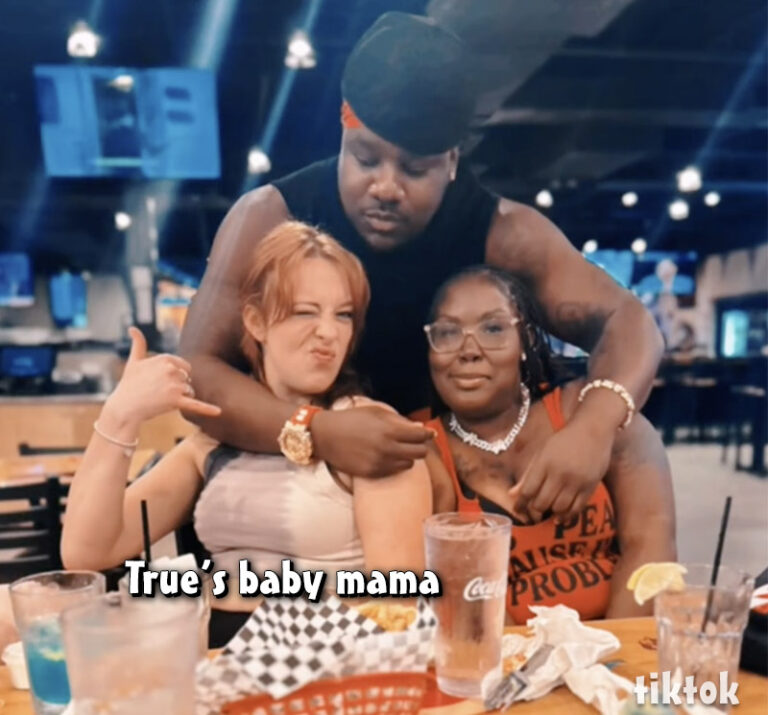Love During Lockup Samantha got 10 years for 4th DUI Exclusive Details!
Divorced 58-year-old Love During Lockup star Rick got curious about a girl he dated in high school named Samantha. Searching for Samantha online turned her up relatively quickly — on a prison penpal website!
A few prison bars weren’t going to stand in the way of Rick, and he reached out to Samantha via mail. The two quickly hit it off and rekindled their previous romance.
Much to the chagrin of his nieces, Rick eventually proposed and intends to marry Samantha when she is released. But, how long will he have to wait?
“I’ve been charged with felony DUI,” Samantha reveals during a Love During Lockup confessional. “I got three-and-a-half years.”
Three-and-a-half years in prison may seem like a lot for a DUI conviction, but that’s only the half of it. Actually, it’s closer to just a third of it!
According to court and prison records, Samantha was sentenced to TEN YEARS in prison after being convicted of DUI stemming from an arrest in October of 2018.
Why did Samantha get 10 years for DUI?
The reason Samantha received such a harsh prison sentence for driving under the influence is because it was her fourth DUI arrest. Not helping matters was the fact that Samantha was still on probation from her third DUI conviction when she was arrested.
Below is a brief recap of the details surrounding Samantha’s fourth DUI arrest from court documents, with citations omitted and her first name substituted for her last.
On October 18, 2018, police received a ‘report of a drunk driver’ from Samantha’s roommate, who advised that Samantha ‘had been drinking all day and may have had two bottles of liquor,’ that she ‘left to go purchase more liquor,’ and that she ‘may go to the liquor store on S. Meridian road.’
An officer subsequently located Samantha in the parking lot of the liquor store, ‘sitting in the driver’s seat’ of her vehicle. The officer ‘could smell an odor of an alcoholic beverage coming from [Samantha’s] person’ and noted that Samantha’s ‘speech was slow and slurred and her eyes were glassy and blood shot.’
Samantha ‘admitted to driving to the liquor store by herself and having two beers before driving.’
When the officer asked Samantha to exit her vehicle, she ‘leaned on it to keep her balance.’
Samantha failed field sobriety tests, and subsequent breath testing yielded results of .325/.325 BrAC.
Next we have an excerpt from court documents with details about Samantha’s sentencing:
The state charged Samantha with felony DUI (prior felony DUI conviction within 15 years). The case proceeded to trial and a jury found Samantha guilty as charged.
The district court imposed a unified sentence of 10 years, with three and one-half years fixed, and ordered that the sentence run concurrently with Samantha’s sentence for a prior felony DUI, for which she was on probation when she committed the instant offense.
Samantha filed a notice of appeal timely from the judgment of conviction.
“I have always struggled with alcohol,” Samantha admits on Love During Lockup. “It’s been a problem off and on.”
56-year-old Samantha seems to be underplaying her alcohol problem a bit, and the Court of Appeals agreed when ruling on her plea for a sentence reduction.
Below is a lengthy excerpt from the Appeals Court ruling in support of the ten-year prison sentence. It includes details about Samantha’s extensive history of alcohol abuse as documented by the courts over the years.
Love During Lockup Samantha Arrest History
[Court of Appeals ruling excerpt]
Application of these legal standards to the facts of this case shows no abuse of discretion.
First, the district court applied the correct legal standards. It found that Samantha is “a multiple offender,” that she has failed to rehabilitate or be deterred from drinking and driving despite prior legal sanctions and treatment opportunities, that “any other sentence other than incarceration will depreciated the seriousness of this offense and the repeated nature of the offense,” and that correctional treatment “is most effectively provided in the institution,” as Samantha had already “had the opportunity for rehabilitative treatment on probation” and “the opportunity of a rider, and [she] still engage[s] in the same conduct.”
The court noted that “drinking on probation is very different than the decision to get behind the wheel and drive after you’ve been drinking,” and advised, “The primary factor that I have to consider is protecting society. And when you get in a vehicle that’s somewhere between one and two tons and elect to drive that vehicle in an impaired state, my primary concern is actually protecting society.”
The court found that Samantha’s driving under the influence “is a significant danger when it’s coupled with the fact that you have a history of not just drinking.
This is not just substance dependence. You have a history of coupling a car with that drinking behavior,” and “significantly, there is a risk that you will commit another crime, which is drinking and driving.”
Accordingly, the district court imposed a unified sentence of 10 years, with three and one-half years fixed, and ordered that the sentence run concurrently with Samantha’s sentence for her prior felony DUI, for which she was on probation when she committed the instant offense.
The district court’s analysis is supported by the record. Samantha has repeatedly chosen to endanger others by driving while intoxicated.
In 2005, she committed a DUI for which she was granted a withheld judgment and placed on probation until April 10, 2007.
In 2010, she committed a second DUI and was placed on supervised probation for two years.
Samantha committed a third, felony DUI in 2013; consequently, she completed a period of retained jurisdiction, after which she was placed on supervised probation for five years beginning in February 2015.
While on felony probation, she continued to consume alcohol and was sanctioned with discretionary jail time.
She subsequently “reported attending Celebrate Recovery and said she did not have urges to consume alcohol”; however, she thereafter failed to report for an appointment with her probation officer, changed residences without permission, and was charged with the new crime of disturbing the peace after police were “called” to her residence three times in one day “as she was very intoxicated and having a verbal dispute with the landlord.”
Samantha’s probation officer ultimately filed a report of violation “as [Samantha] was charged with a new misdemeanor, she was not attending treatment, continued to drink alcohol, and missed an appointment.”
Shortly thereafter, Samantha committed the instant felony DUI offense. Her probation officer recommended “imposition of sentence.” The presentence investigator likewise recommended imprisonment, advising that Samantha “appears to minimize her drinking,” she “does not feel she needs treatment,” she “has continued to put herself and the community as a whole at risk,” and she presents a “high risk to re-offend.”
On appeal, Samantha argues that her sentence is excessive because she has health problems, she is willing to participate in alcohol treatment, she “accepted responsibility and expressed her remorse over this offense,” and “this offense took place during a very difficult, emotional, and exhausting period for [her].”
However, all of these factors were present when Samantha committed her prior felony DUI in 2013, and none of them precluded her from once again choosing to endanger the community by driving while intoxicated in the instant offense, nor was she deterred by the fact that she was on supervised probation for a prior felony DUI.
Furthermore, Samantha has previously participated in substance abuse classes, outpatient treatment, and the retained jurisdiction program, but she has failed to rehabilitate and her risk to reoffend has only increased.
Samantha’s arguments do no show that the district court abused its discretion.
Samantha’s sentence is appropriate in light of the seriousness of the offense, Samantha’s ongoing decisions to endanger the community by driving while intoxicated, her failure to rehabilitate or be deterred, and her high risk to reoffend.
Samantha has failed to establish an abuse of sentencing discretion.
Is Samantha still in prison?
According to prison records, Samantha is still in the custody of a “Community Reentry Center,” which is likely the same facility she was in while filming for Love During Lockup.
There is no “release date” or “parole eligibility date” listed for Samantha. Her “Sentence Satisfaction Date” is October 27, 2028.
Court records indicate Samantha was sentenced on June 20, 2019. She was given a determinate sentence of 3 years, 6 months and an indeterminate sentence of 6 years, 6 months. She was credited for 246 days time served.
So, why is Samantha still in custody in May of 2024?
I do not have a clear answer, but I was able to find a possible explanation. In October of 2022 Samantha was charged with resisting or obstructing an officer as well as disorderly conduct – fighting or violent behavior. I assume these were charges she received after an incident that occurred in prison?
Both of the charges were included on the list posted by WE tv during Samantha’s introduction:
Samantha was found guilty on both counts in November of 2022. My assumption is that the 2022 conviction pushed back Samantha’s release? Perhaps we will learn more on the show.
To find out, be sure to tune in to new episodes of Love During Lockup airing Friday nights at 9/8c on WE tv!
Asa Hawks is a writer and editor for Starcasm. You can contact Asa via Twitter, Facebook, or email at starcasmtips(at)yahoo.com









